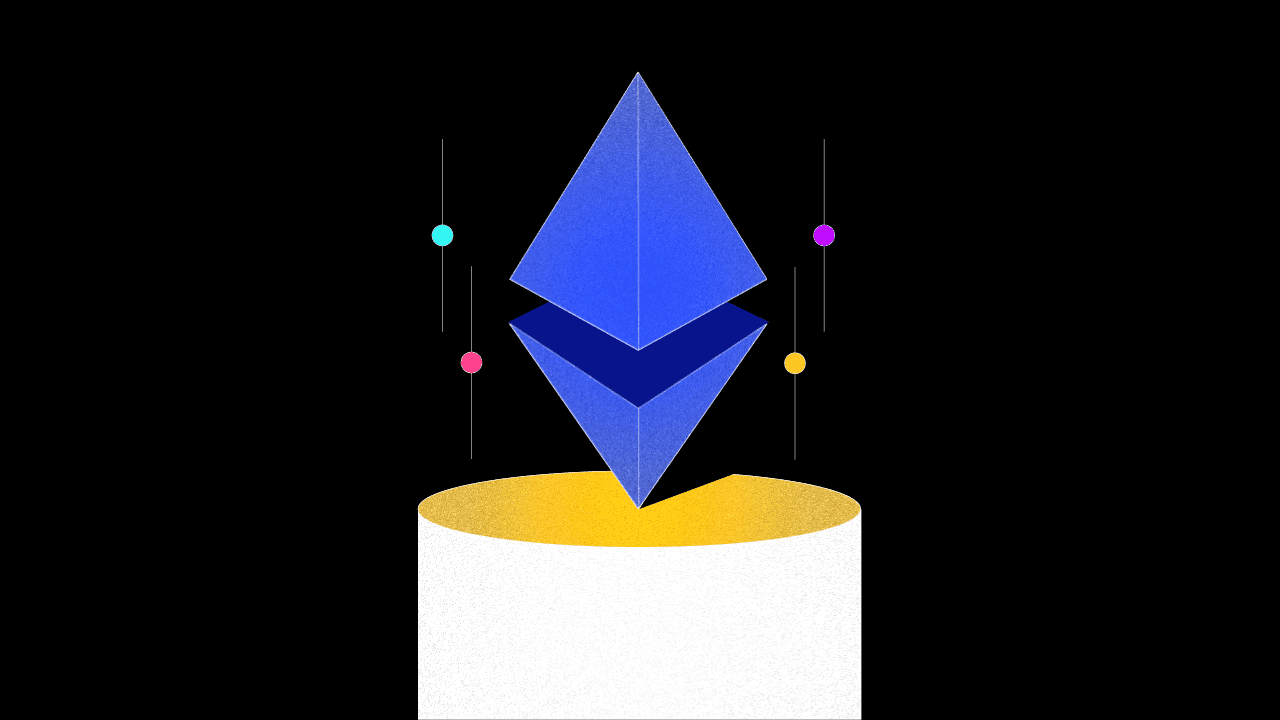
Ethereum is a popular cryptocurrency after Bitcoin. Built on advanced blockchain technology, Ethereum is not just a digital currency but a versatile platform that supports a range of applications.
This article will explore the unique technology behind Ethereum, its diverse use cases, and how it differs from Bitcoin. We will also look into future prospects and price predictions for Ethereum in the coming years and guide you on where to buy it. Let’s dive into the world of Ethereum.
Key Takeaways
- Ethereum, introduced in 2013 by Vitalik Buterin, is a decentralized platform powered by blockchain technology, primarily known for its cryptocurrency, Ether (ETH).
- Its standout feature is the ability to create and execute smart contracts, enabling a wide range of decentralized applications across industries like finance, gaming, and more.
- Ethereum recently underwent a significant upgrade known as “the merge,” transitioning from proof-of-work (PoW) to proof-of-stake (PoS) consensus mechanism, drastically reducing its energy consumption.
- With its versatile applications, including decentralized finance (DeFi), smart contracts, and digital assets like non-fungible tokens (NFTs), Ethereum remains a key player in the blockchain space, offering strong investment potential and real-world utility.
What Is Ethereum (ETH)?
Introduced in 2013 by co-founder Vitalik Buterin, Ethereum is a decentralized platform that runs on blockchain technology. It is known for its cryptocurrency, Ether (ETH).
Ethereum’s main feature is its ability to create and execute smart contracts. These are self-executing contracts with the terms of the agreement directly written into code. This allows developers to build a wide range of applications, from games to complex financial transactions, all decentralized and secure.
Currently, there are over 120 million ETH tokens in circulation, highlighting its widespread adoption.
Highlights of Ethereum
| Symbol | ETH |
| Number of Tokens | 122.1 Million |
| Market Capitalization | $362.18 Billion |
| All-time-high (ATH) | $4,878.26 |
| All-time-low (ATL) | $0.4 |
(As on 24th April, 2024. Source: CoinMarketCap)
History of Ethereum
The origination of Ethereum was from 2013 until it was finally released publicly in 2015.
Here is a quick timeline of the key milestones in Ethereum’s development, highlighting its evolution from a concept to a leading platform in the blockchain industry.
| Year | Event | Description |
| 2013 | Whitepaper Publication | Vitalik Buterin published the original whitepaper, introducing Ethereum as a platform for decentralized applications beyond just financial transactions. |
| 2014 | Project Announcement and ICO | Buterin, Gavin Wood, and Jeffrey Wilcke formally announced Ethereum and conducted a successful ICO, raising over $18 million. |
| 2015 | Official Launch – “Frontier” | The first public release of Ethereum, known as Frontier, was launched, marking the establishment of Ethereum as a functional blockchain ecosystem for dapps. |
Ethereum got better with 2.0
The significant Ethereum update, known as “the merge,” was announced in 2022. The merge was a transition from a proof-of-work (PoW) to a proof-of-stake (PoS) consensus mechanism.
This upgrade reduces the Ethereum blockchain’s energy consumption to a fraction of its former requirement. By moving away from the energy-intensive mining process, where extensive computations were necessary to validate transactions, Ethereum now utilizes a staking approach.
The merge represents a major advancement for Ethereum, making it a more sustainable and scalable platform and is expected to decrease its carbon footprint by up to 99.95%, significantly addressing environmental concerns.
Tech underlying Ethereum
The tech on which Ethereum is built is based on three pillars.
1. For creation – Blockchain Technology
2. For validation – Proof-of Stake
3. For storage – wallets
Blockchain Technology
Ethereum operates on a blockchain, a type of distributed ledger that encodes data into blocks. These blocks are chained together and distributed across the network, making the data nearly impossible to alter. Each block is validated and linked using cryptographic techniques, ensuring the integrity and security of the entire chain.
Proof-of-Stake Validation
Ethereum’s proof-of-stake (PoS) mechanism, known as Gasper, replaces the traditional mining process used in proof-of-work systems. Validators stake a minimum of 32 ETH to propose and attest to new blocks. This process is less energy-intensive and increases security as dishonest validators risk losing their staked ETH.
Wallets
Ethereum wallets are digital interfaces that store private keys used to access Ether tokens. These keys are crucial for initiating transactions and are akin to a password. Wallets do not store the tokens themselves but provide the tools needed to interact with one’s assets on the blockchain.
Real-World Use Cases of Ethereum
Ethereum, is revolutionizing various industries with its robust capabilities. Here are some of the most impactful real-world use cases of Ethereum:
- Banking and Finance
Ethereum is transforming the banking sector through decentralized finance (DeFi) applications. This technology is so promising that even central banks, such as Norway’s, are exploring Ethereum-based solutions to develop their own central bank digital currencies (CBDCs).
- Smart Contracts
The Ethereum network helps in building development and deployment of smart contracts which automate the execution of agreements without the need for intermediaries, thereby streamlining processes across various industries. The platform has seen a significant increase in smart contract creation, growing by 24.7% early in 2022, reflecting their growing popularity and utility.
- Data Storage
Ethereum offers a decentralized solution for large organizations , which function on the pillars of data security and integrity. The Ethereum blockchain mitigates these risks by distributing data across the network, thus enhancing security and reducing the likelihood of data loss due to hardware failures.
- Digital Assets
Beyond its native cryptocurrency, Ether, Ethereum is the foundation for numerous other digital currencies, including USDT and Binance Coin. It also supports the creation and management of non-fungible tokens (NFTs) as well. This broadens Ethereum’s application in the digital asset economy.
With its extensive use cases, Ethereum serves as the foundation for numerous tokens and applications. However, the comparison between Ethereum and Bitcoin remains a particularly intriguing aspect.
ETH Vs Bitcoin
While Ethereum and Bitcoin are both virtual assets and a store of value, their functionalities differ. We have compared the two in the table below.
| Feature | Bitcoin | Ethereum |
| Popularity | Bitcoin is the first cryptocurrency that started in 2008. It is the biggest crypto by market cap and popularity. | Ethereum was founded in 2015. Its crypto, Ether, is the second biggest crypto in terms of market cap and popularity. |
| Coins Mining | Bitcoin cannot be in infinite numbers. The cap is 21 million, after which no new Bitcoins would be created. | There is no cap on the number of ETH that could ever exist. However, for each year, there is a cap of 18 million. |
| Usability | Bitcoin is a payment token and a store of value. | ETH is used as a mode of payment within the Ethereum ecosystem. It also facilitates the building of DApps, smart contacts, digital assets, etc., on the Ethereum blockchain network. |
| Speed of Transaction | The Bitcoin network adds a new block once every 10 minutes. | Compared to Bitcoin, the transaction speed of Ethereum is extremely quick. New blocks are added every 12 seconds. |
Why should you invest in Ethereum?
Ethereum is versatility and innovative, and is the first to support smart contracts, essential for various dApps like DeFi and NFTs. Its recent transition to Proof of Stake in 2022 through “the merge” cuts energy use drastically. It’s favored for high-value DeFi projects like Uniswap and MakerDAO, demonstrating strong adoption and growth, and consistently shows robust market performance, often outpacing Bitcoin in growth during bull markets.
Eth price prediction
How to Buy or Invest in Ethereum?
You can buy Ethereum with INR in India is a simple, straightforward process. One can buy Ethereum from reputed crypto exchanges in India. Mudrex is one such. You can download the Mudrex app to buy Ethereum with INR in India 24×7. Along with Ethereum you can explore 350 other cryptocurrencies, ‘Coin Sets’ a basket of theme-based cryptocurrencies curated by their in-house experts.
Conclusion
Ethereum stands out as a pioneering and continuously evolving platform in the blockchain space. Its shift to a Proof of Stake mechanism, foundational role in major DeFi projects, and robust market performance underscore its potential as a valuable investment. As Ethereum continues to adapt and expand its capabilities, it remains a key player in the future of decentralized applications and finance.
FAQs
1. What is Ethereum used for?
Ethereum works on its own distributed blockchain network. It is highly secure, and developers use it to build smart contracts, decentralized applications, and other digital assets. Ether (ETH) is the native cryptocurrency of the Ethereum network.
2. What is the difference between Bitcoin and Ethereum?
The main difference between Bitcoin and Ethereum is that while Bitcoin is a payment token, Ethereum, in addition to facilitating payments, enables the blockchain network to build an array of applications. Bitcoin has a lifetime cap of 21 million, while for ETH, there is no such cap (only an annual cap of 18 million.) Thus, both derive their value differently.
3. Why is Ethereum so popular?
Ethereum, founded in 2015, provides a wide spectrum of applications, from creating new cryptos to building smart contracts to execute transactions without third parties. This functionality of Ethereum has helped it gain extensive popularity over the years.
4. Is Ethereum better than Bitcoin?
Whether Ethereum is better than Bitcoin depends on your needs. Each has its own strengths based on usage and goals.
- Bitcoin, designed as digital money, is mainly a store of value.
Ethereum, however, serves as a platform for decentralized applications and smart contracts, offering greater versatility. - Bitcoin uses energy-intensive proof-of-work, while Ethereum has moved to a more efficient proof-of-stake system.
- Bitcoin is typically seen as more stable, while Ethereum’s flexibility allows for rapid innovation and development.





